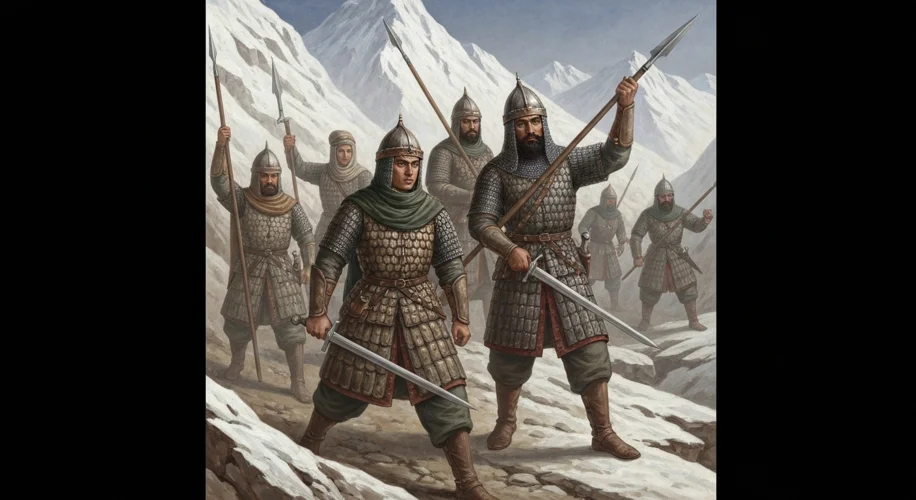In the rugged, mist-shrouded mountains of northern Iran, a people carved their identity not from soft soil, but from granite and grit. These were the Daylamites, a force whose very name would echo through the annals of medieval Iran, striking awe and respect into the hearts of kings and commoners alike.
For centuries, the remote highlands of Gilan, known as Daylam, served as a crucible for these hardy folk. Isolated by geography and tradition, they developed a unique culture, fiercely independent and deeply bound to their mountainous homeland. Unlike the settled agriculturalists of the Iranian plains, the Daylamites were renowned for their martial prowess, a skill honed by generations of defending their territory and by the inherent challenges of their unforgiving environment. Their society was organized into clans, each with its own chieftain, fostering a strong sense of loyalty and a decentralized, yet formidable, fighting spirit.

The historical stage upon which the Daylamites would truly shine was medieval Iran, a land often fractured by competing dynasties and external pressures. Their moment of significant influence arrived with the rise of the Buyid dynasty in the 10th century CE. The Buyids, themselves of Daylamite origin, understood the formidable capabilities of their kinsmen. They recruited Daylamite soldiers in large numbers, recognizing their discipline, ferocity, and unwavering loyalty. These mountain warriors became the backbone of the Buyid military, a force that would eventually conquer vast swathes of Persia and even seize control of the Abbasid Caliphate in Baghdad.
The Daylamite soldier was a sight to behold, and a terrifying one to face. Clad in mail or scale armor, often with distinctive conical helmets, they wielded a variety of weapons with deadly skill. Spears, swords, maces, and even bows were their tools of trade. What set them apart, however, was not just their armament, but their tactical approach and their sheer ferocity in battle. They were known for their ability to fight in difficult terrain, scaling rocky slopes and navigating dense forests with ease – a stark contrast to the cavalry-dominated armies of many of their contemporaries.
Their fighting style was often characterized by aggressive charges and close-quarters combat, where their skill with the sword and their resilience proved decisive. Legend and historical accounts speak of their bravery bordering on recklessness, a willingness to face overwhelming odds. This reputation was not unfounded. In the service of the Buyids, Daylamite soldiers played a crucial role in numerous campaigns, from securing Persian territories to asserting dominance over the fractured Islamic world.
One cannot speak of the Daylamites without acknowledging their unique customs and beliefs. While broadly following Islamic traditions, pockets of pre-Islamic Zoroastrianism and local animistic beliefs persisted in their homeland, influencing their cultural practices. This blend of traditions, coupled with their rugged independence, contributed to their distinct identity. They were known for their distinctive social structures and, in some accounts, their particular styles of dress and adornment.
The impact of the Daylamites on medieval Iranian history was profound. As the military elite of the Buyid dynasty, they were instrumental in establishing a powerful Persian empire that challenged the political and cultural hegemony of the Abbasid Caliphate. Their presence at the highest echelons of military and political power in Baghdad for over a century marked a significant shift in the Islamic world, reasserting Persian influence at a time when Arab dominance had long been assumed. The Buyid period, bolstered by Daylamite strength, saw a flourishing of Persian arts, sciences, and literature, a testament to the stability and patronage they provided.
The legacy of the Daylamites is etched in the military history of Iran. They represent a powerful example of how a distinct cultural group, forged by its environment and traditions, could rise to shape the destiny of a vast empire. Their story is a reminder that history is not merely the story of kings and empires, but also of the formidable peoples who, from their mountain strongholds, could turn the tide of nations.

